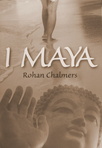Chapter 1. Paragraphs 3, 4 and 5.
It was the time of the Tibetan riots against the Chinese occupation; it was 2008, the lead-up to China’s hosting of the Olympic Games.
An element of guilt slowly invaded his thoughts as he pondered relentlessly the question of whether, ethically, he should be involved in the protests in a more direct way. But the Abbot of his monastery left it to each of the monks to decide for themselves whether to be involved or not.
“The answer can only depend on where you are, at this moment, in your personal dream. If you know where you are now with clarity, then the question is answered; you are taking the right action!”
In this excerpt from the book, I begin to introduce the very human side of Rinpoche.
Even though a monk with advanced understanding about his/her religion, if I can dare to call Buddhism a religion, s/he is still dealing with issues of conscious that we all need to face at certain times in our lives. It can be slightly naïve sometimes for a lay person to believe that people more advanced on the spiritual journey are somehow less attached or somehow more mentally free when it comes to human, every day issues but this is not necessarily correct. The problems and mental dilemmas still exist for them as they too are part of this shared experience with us, but it comes down to viewpoint and how we perceive a situation; it’s a search for the right view that allows solutions to present themselves.
This idea is also presented to us by the statement that the Abbot makes in relation to participating in the protests or not. Once presented with the right view, the individual can then act in a way according to their own place in their own personal experience.
An element of guilt slowly invaded his thoughts as he pondered relentlessly the question of whether, ethically, he should be involved in the protests in a more direct way. But the Abbot of his monastery left it to each of the monks to decide for themselves whether to be involved or not.
“The answer can only depend on where you are, at this moment, in your personal dream. If you know where you are now with clarity, then the question is answered; you are taking the right action!”
In this excerpt from the book, I begin to introduce the very human side of Rinpoche.
Even though a monk with advanced understanding about his/her religion, if I can dare to call Buddhism a religion, s/he is still dealing with issues of conscious that we all need to face at certain times in our lives. It can be slightly naïve sometimes for a lay person to believe that people more advanced on the spiritual journey are somehow less attached or somehow more mentally free when it comes to human, every day issues but this is not necessarily correct. The problems and mental dilemmas still exist for them as they too are part of this shared experience with us, but it comes down to viewpoint and how we perceive a situation; it’s a search for the right view that allows solutions to present themselves.
This idea is also presented to us by the statement that the Abbot makes in relation to participating in the protests or not. Once presented with the right view, the individual can then act in a way according to their own place in their own personal experience.
Published on May 21, 2011 02:50
No comments have been added yet.



